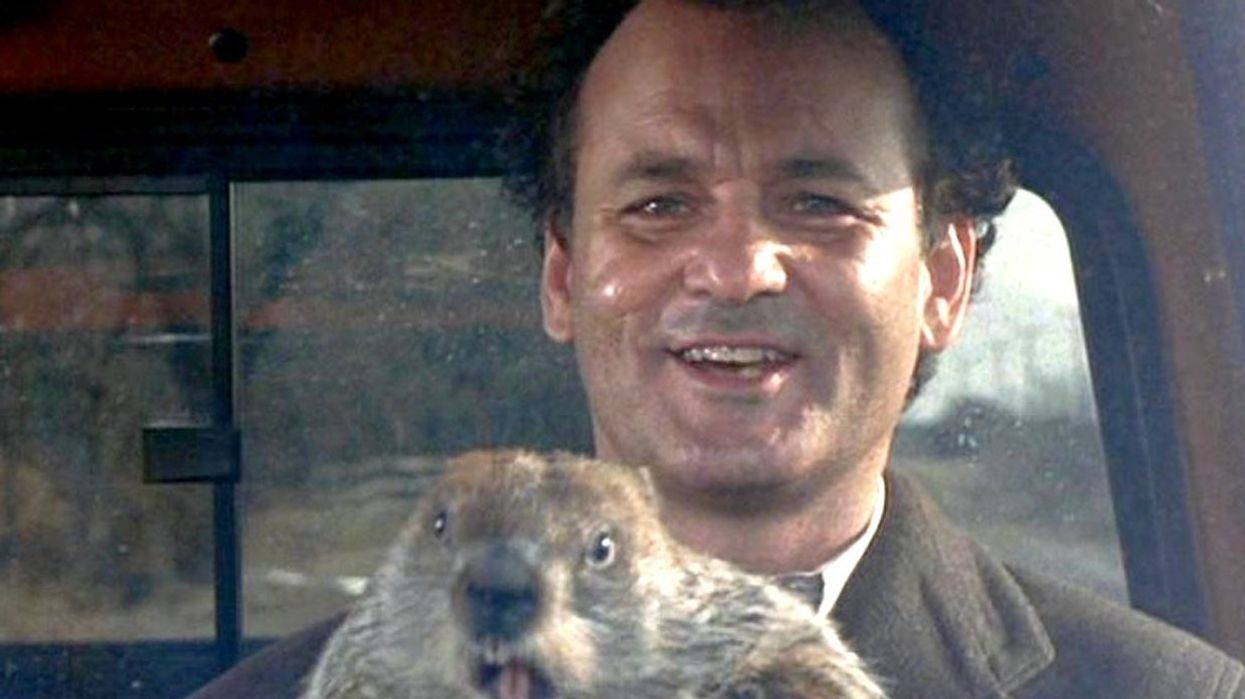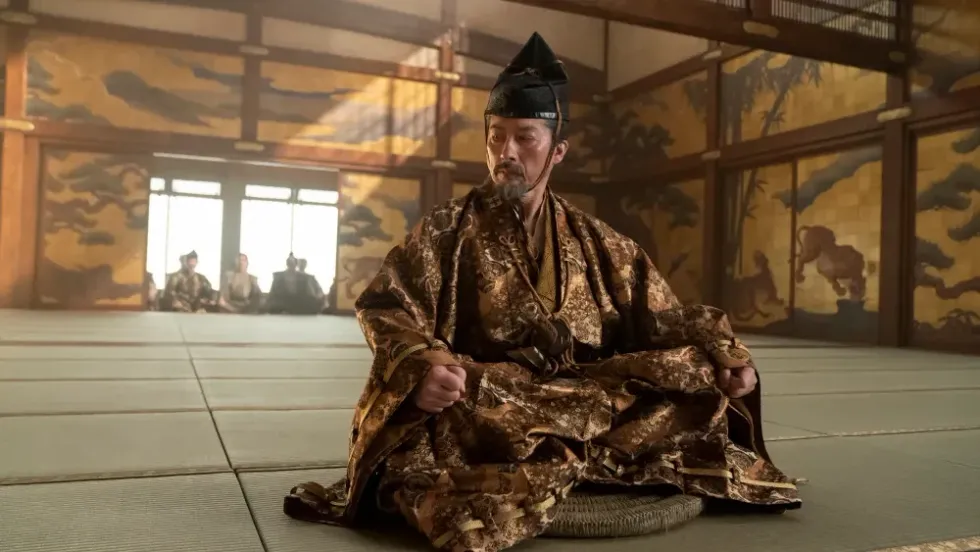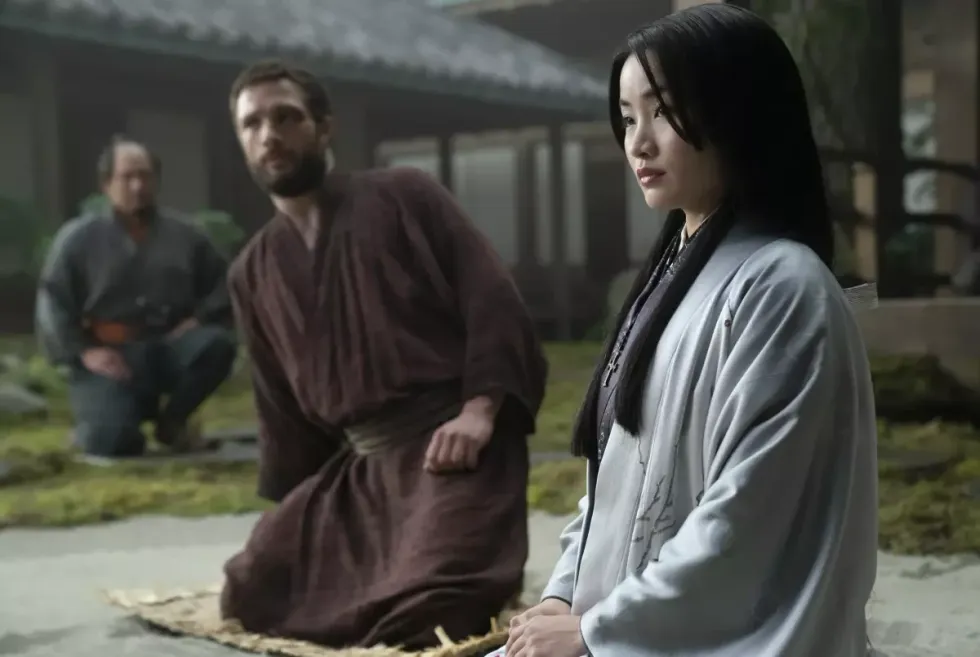3 Reasons Why 'Groundhog Day' Just Might Be the Perfect Comedy
The best thing about Groundhog Day? It reminds us to watch the Ramis comic masterpiece of the same name.

Every year on February 2nd, people all over the US take a moment to stop, reflect, and anxiously await the appearance of a ceremonial groundhog who will decide whether or not we get six more weeks of winter. On a lighter note, people the world over also have one more reason to watch Harold Ramis' 1993 masterpiece Groundhog Day.
The "holiday" of Groundhog Day isn't really a holiday, it's just an observance, and, to add insult to injury, technically shouldn't even be called "Groundhog" Day; the tradition dates back to early settlers from what is now known as Germany, where the animal in question was a badger. We've already gotten our prediction for this year, with "Punxsutawney Phil" predicting six more miserable weeks, but that's not why we're here. We're here to discuss why the 1993 film of the same name is one of the perfect movies ever made. Here are three reasons why:
1. Structure
During press for Silver Linings Playbook, director David O. Russell related that he once told Andy McDowell (Murray's co-star), "I would give my left arm to have written that [expletive deleted] script. It's the only movie I think of from that period other than the ones by Quentin [Tarantino]. It makes me mad because I would so like to make a film like that. Oh man, I could go on forever about that movie…"
Russell is not alone in his appreciation of the film's beautiful framework—the WGA voted its screenplay the third funniest ever). For those who don't remember, or (one shudders) have never seen the film, here's a refresher on the basics of the plot:
It's not complicated: Bill Murray is Phil Connors, a dyspeptic and cynical weatherman who, after filming a segment on the holiday, is stranded overnight by a blizzard and forced to spend the night in Punxsutawney, PA (played, in the movie, by Woodstock, which profited enormously from its association with the film). The next morning, though, he wakes up at 6:00 AM to the clock-radio strains of "I Got You, Babe" and is horrified to discover that no matter what he does, every morning from then on, and for reasons that are never explained, it will always be Groundhog Day. Unless he can figure out what's going on, of course, and how to stop it.
The script, originally by Danny Rubin (check out an an early Ramis revision here) had a hard time finding a home in Hollywood. When Ramis first read the script, he felt that it reminded him of classics like It's a Wonderful Life, except updated for the 1990s. It does share elements with that film, from a small town in winter, to a main character who goes from to despair to enlightenment, as well as a dash of metaphysics (though, unlike in Life, nothing is ever explained, which is crucial). Ramis emphasized the importance of jokes in the film, over and above any metaphysics or speculation about time loops that were emphasized in Rubin's early drafts, and worked at shaping the film into a more conventionally shaped "rom-com" that the studio would find palatable.
Ramis kept all of the subtext where subtext should be. That is, he never made the film explicitly anything more than a comedy about a man who goes from a jerk to a better person, all in what he thinks is the pursuit of one goal (love) when really he is pursuing another (enlightenment.) The film's structure is so remarkable and noteworthy not because it's particularly novel (though it is), but because it's not; it's an illustration of the principal that a simple framework can hold profound meaning, and Ramis' decision to keep all the time-loop paradox stuff in the background is a brilliant one. Ultimately, as The Dissolve observes, "Groundhog Day is written and directed with almost mathematical precision."
2. Bill Murray
Groundhog Day marked a transition in Bill Murray's career. In the early '90s, Bill Murray was at the beginning of the end of his "movie star" Hollywood phase, a period lasted for almost the entire 1980s; soon afterGroundhog Day, he would be making one of his first inimitable turns as a character actor, in Tim Burton's Ed Wood. Interestingly enough, Groundhog Day was his last collaboration with Harold Ramis (with whom he had worked on six films); during filming, they got into a fight which lasted for 21 years, until just before the director's untimely death in 2014.
"Murray is indispensable; before he makes the film wonderful, he does a more difficult thing, which is to make it bearable." -Roger Ebert
It's arguable, though, that without Murray, Groundhog Day could have easily been insufferable. Indeed, such a point was made by Roger Ebert in his "Great Movie" post on the film: "Murray is indispensable; before he makes the film wonderful, he does a more difficult thing, which is to make it bearable....A long list of actors...could appear in this material and render it simpering, or inane." Ebert added that, "the screenplay...is inspired, but inspired crucially because they saw Bill Murray in it. They understood how he would be able to transform it into something sublime, while another actor might reduce it to a cloying parable."
3. Surprising depth
In 2003, the The New York Times reported that, during the run-up to a series at MOMA entitled "The Hidden God: Film and Faith", a curious film had become the front-runner for screening, ahead of films by heavy-hitters of film world like Bergman: "Curators of the series, polling some 35 critics in the literary, religious and film worlds to suggest films with religious interpretations, found that Groundhog Day came up so many times that there was actually a squabble over who would write about it in the retrospective's catalog."
This might be surprising, and that's part of the genius of the film, especially because, as mentioned above, Ramis gave priority to the jokes, rather than to the spiritual elements of the film. If you wanted to just enjoy a Bill Murray movie on the surface level, you could do that, but if you were receptive to the film's subtext, you'd get a whole lot more.
Groundhog Day takes on the concept of time travel but doesn't ever explain itself, and that's where the depth comes from. This departs from, say, It's a Wonderful Life, where there is almost a literal Deus Ex Machina (an angel, but someone affiliated with a higher power) that appears and helps Jimmy Stewart understand the error of his ways. In Groundhog Day, the reason for Phil's passage in...what? Limbo? Hell? The world of the Tibetan Book of the Dead? is never explained.
Ramis is quoted in the Times article as saying, ''At first I would get mail saying, 'Oh, you must be a Christian, because the movie so beautifully expresses Christian belief'...Then rabbis started calling from all over, saying they were preaching the film as their next sermon. And the Buddhists! Well, I knew they loved it, because my mother-in-law has lived in a Buddhist meditation center for 30 years and my wife lived there for 5 years.''
Groundhog Day casts a long shadow (no pun intended), to the point where the recent Sundance film Before I Fall, which also features time loops, was careful to make it plain they were not inspired by Groundhog Day. But there's no shame in taking inspiration from one of the most interesting and deceptively rich films ever made in Hollywood. Between the script (and Ramis' direction), Murray's transcendent performance, and the rich subtext of meaning, the film is far greater, than the sum of its parts. It's an American classic that also gave a pretty dopey holiday a new lease on life, and if I had my way, there would be free screenings of the film nationwide every February 2nd, instead of an obfuscating rodent that's scared of its own shadow. But I digress. Happy Groundhog Day!

 ShōgunFX
ShōgunFX ShōgunKatie Yu/FX
ShōgunKatie Yu/FX









